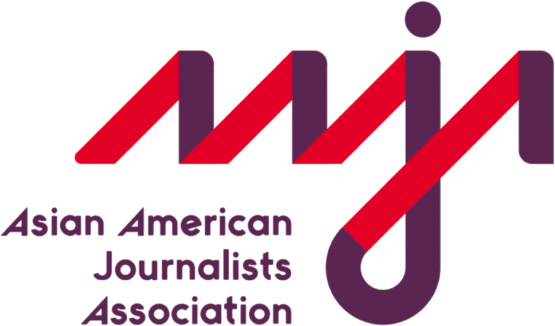Audio
Student work • Los Angeles 2022
 All you really need to be hired as an English teacher in Asia is a passport from the right country, or in some cases just look white.
All you really need to be hired as an English teacher in Asia is a passport from the right country, or in some cases just look white.
Published July 28, 2022
 Serena Puang
Serena Puang

Novillia Nyoto has been an English teaching assistant for two years.
Listen to it below:
All you really need to be hired as an English teacher in Asia is a passport from the right country, or in some cases just look white.
“I’ve met like people who are just like ‘I was backpacking through Southeast Asia and I fell in love with Thailand and I just wanted to stay, so I just started teaching English,” said Tessa Charupatanapongse, who was born in Thailand and attended American school there. After finishing her Bachelor’s in the U.S., she returned to Thailand thinking that she could teach English too.
“I remember contacting people and going around and being like ‘Hi can I teach English?’,” said Charupatanapongse. “I consider myself a native speaker at this point,and they would see me and look at me and be like ‘Oh… we only hire native speakers.’”
This isn’t just about language skills or teaching qualifications. When they said “native speakers,” they seemed to have a particular image in mind. Some people would even go as far as to say they wanted Caucasian Americans or Canadians.
In Asia, many people, including parents and English teacher recruiters believe that native speakers, or people that speak English as a first language, are the best teachers of English, regardless of qualifications. Dr. Lok Siu, an Associate Professor of Asian American and Asian Diaspora Studies at UC Berkeley said parents are looking for a sense of how they can train their children to be ‘fully American’. “If their sense of being American is whiteness,” said Siu, “then you might want your child to be taught by a white American.”
Siu adds that due to English and the United States’ dominance on the world stage, parents in Asia want their kids to learn English in a way that would help them thrive in an American context. “Whiteness becomes a stand in as a qualifier for being a native English speaker and being able to teach,” she said.
The English teaching industry is complicated. Cram schools — private classes outside school hours — abound in big cities. Some people hire private tutors, others rely on local English teachers or special programs like Fulbright which sends teaching assistants from the US.
But not all teachers are equally qualified. Despite teaching certifications and English proficiency tests, many who teach English in Asia have no formal qualifications or experience.
Novillia Nyoto is an MBA student from Indonesia who’s studying in Taiwan. and she had good scores on two different English proficiency tests.
Nyoto has been teaching English on the side for two years. But when she was hired, they didn’t even ask to see her English proficiency scores. She was immediately placed in a part-time, teaching-assistant position that pays less than six dollars an hour.
For reference, her mostly white, full-time, teaching counterparts make over $20 an hour. And during the pandemic, many Ivy League students or graduates who went on to teach in Asia were paid up to $60 an hour.
“If the teacher is actually a native speaker, I have no problem with that,” said Nyoto. “It’s their main language.” To her, the problem is that lots of teachers at Nyoto’s cram school don’t come from ‘native English speaking countries’, just like her. But since they’re from Europe, and look white, they get promoted to be full time teachers or hired right away.
Ph.D. candidate Hector Alvarez, who’s studying these issues and sociolinguistics, said there are many factors that add up to this.
“It’s like little things that add to the ‘ideal’ English teacher in the eyes of the people,” said Alvarez. “Let’s say in China, you look white, okay that’s one point. You have a ‘native speaking passport’, oh that’s another point. Depending on the boss, one could matter more than the other.”
English teacher candidates are asked to send in resumes with photos, and many hiring processes involve in-person meetings: making things like accent, race, and nationality impossible to hide.
Alvarez had many years of teaching experience in Argentina, where he’s originally from. He’s currently teaching English in Canada, but he struggled to find a job in Japan and South Korea because he isn’t from one of the six to seven countries that are deemed ‘native speaker countries’ like England or the U.S.
He doesn’t face the worst of discrimination because he’s white passing. And Alvarez eventually found a job in China. But when he got there, he was asked to lie about his nationality. “I had to say I was from Minnesota,” he said.
Asian Americans face particular challenges because they are often unable to fulfill people’s cultural and linguistic expectations while in Asia. And of course, Black teachers face some of the . Meaning that they might not even get an interview.
English teaching in Asia is the rare job you can get without being able to speak the local language, or any practical training. The qualifications people look for, as Alvarez said, are a constellation of arbitrary check boxes.
But for now, the boxes that matter most are the ones people have no power to change.
Serena Puang is a 2022 Voices reporter. This story was edited by Naina Rao.
Serena Puang covers living arts for the Boston Globe. She previously interned at IndyStar where she wrote about things to do. She has written and reported for the New York Times, NBC, The Chronicle of Higher Education, Teen Vogue, among other publications.
Naina Rao is an Associate Producer for NPR’s Culture Desk, based in Detroit, Michigan.

Yale College
Audio





Los Angeles 2022





Apply
Become a fellow or editor
Donate
Support our impact
Partner
Work with us as a brand

The Asian American Journalists Association (AAJA) is a membership nonprofit advancing diversity in newsrooms and ensuring fair and accurate coverage of communities of color. AAJA has more than 1,500 members across the United States and Asia.